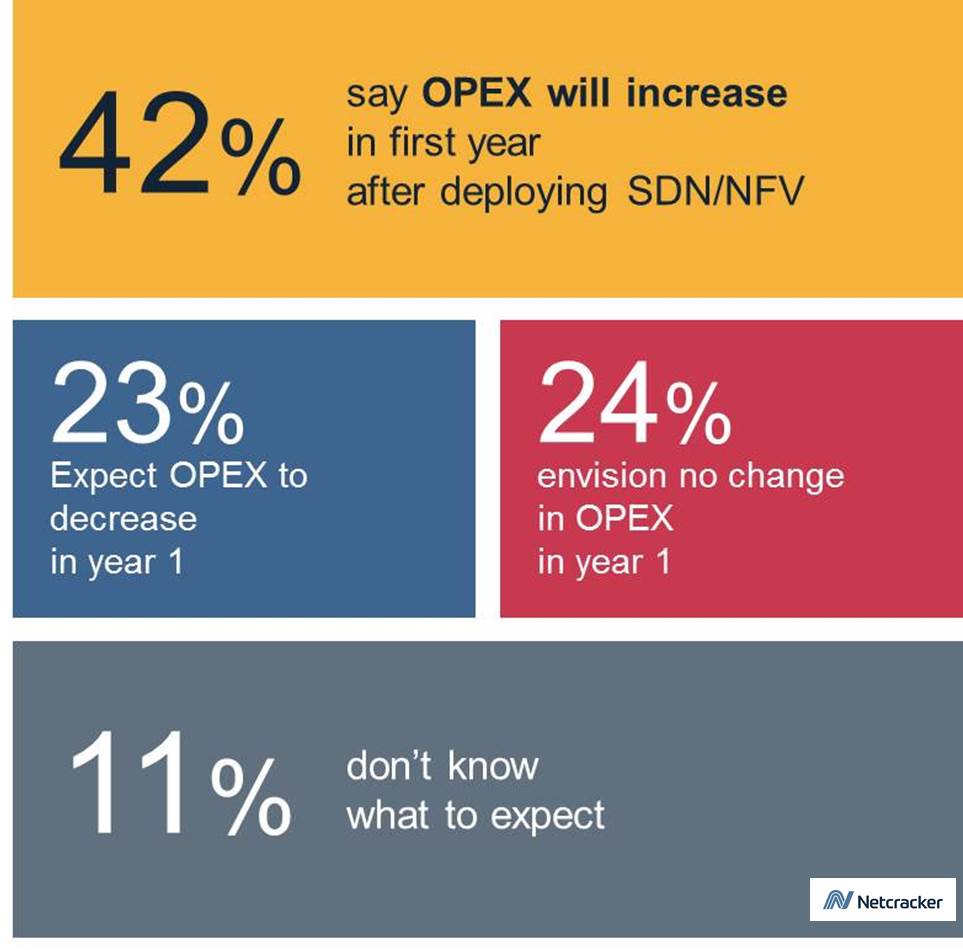Will Opex Rise or Fall in First Year of SDN/NFV?
Nearly two-thirds of service providers expect no OPEX reduction in the first year after SDN/NFV as they transition to a software-centric model.

For many years, service providers have commonly believed that their survival and success depends on cutting costs to help maintain and improve EBITDA. With the introduction of SDN and NFV, however, executive leaders across the industry may be shifting their thinking to adopt a view that says survival in the digital world requires greater investment and thus more risk. In fact, 42 percent of service providers that participated in a recent survey, conducted by European Communications on behalf of Netcracker, believe that opex will increase in the first year after NFV is deployed. With another 24 percent expecting no opex change, nearly two-thirds do not expect to see opex benefits in the first year after SDN and NFV are deployed.
This finding may suggest that virtualization is often viewed as a means to inject agility into the service provider’s business without impacting capex negatively; if the trade-off is a short term spike in opex, the move will be worthwhile. Even if opex will rise in the near term, nearly half (49 percent) of all service providers expect to reduce capex rapidly as a result of deploying SDN and NFV.
Why Will Opex Rise?
A common assumption with SDN and NFV is that use of general purpose hardware that can support a range of network functions and services dynamically and on-demand will result in cost reduction. So a broad-based expectation that opex will rise in the initial years after SDN and NFV deployment seems surprising. Conversely, however, it also reflects a shift to less conservative thinking which accepts the premise that in order to compete against agile digital service providers who have disrupted the industry, new types of thought, action and risk tolerance are necessary.
More tangibly, one reason why near term costs are expected to rise in so many cases is that skill sets across service provider organizations much change, which is always a major undertaking. The survey results bear out this premise as 24 percent of respondents report that they are hiring new staff to facilitate their pivot to a software-based environment. An even greater number, 38 percent, say they are retraining their staff. Managing that level of training and leading a large organization to change a mindset it has held for decades is no small matter. It requires C-level sponsors and drivers.
For example, Andy Macleod, regional CTO of Vodafone, said at the recent Great Telco Debate in London that he believes the move to a software-based model pressures service providers to bring integration and management of the NFV environment in-house to achieve its promised agility. There may be wide agreement on this premise across the industry; the survey finds that only 9 percent of service providers plan to outsource operation of the SDN and NFV environments.
For Better or Worse?
Accepting a short term spike in opex reflects a real shift in thinking. The fact that so many service providers plan to deploy SDN and NFV despite believing opex will increase in the first year should be seen as a positive step for the industry. It is tangible sign of action that backs up the talk across the industry that it is time to re-tool, become more agile and adopt best practices and business models proven in the first generation digital service world.